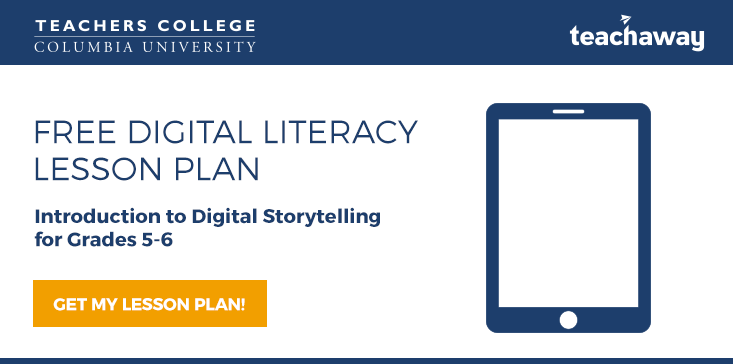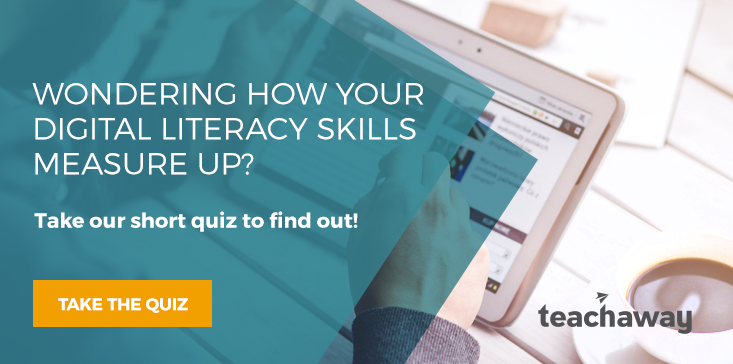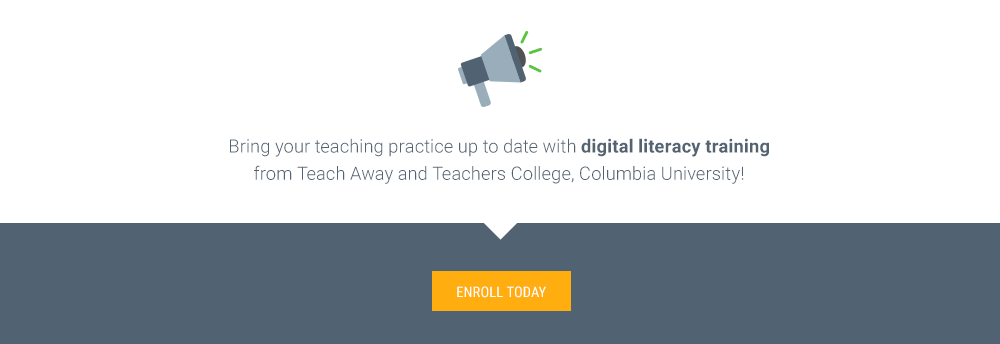Fake news is a popular term and a matter of heated debate today, especially in politics.
So, what is fake and what is real? And how do we protect our students from misinformation?
Those are questions all of us teachers have asked at some point or another.
As we’ve seen first hand, fake news and manipulating information online can not only shape public opinion but also affect the outcome of national elections.
Examples of fake news for elementary or high school students can include clickbait news, apps, games, vlogs and photoshopped/altered images. But that’s just scratching the surface.
That’s why teaching media literacy skills has quickly become a top concern for K-12 educators.
As students increasingly access news online from social media, teachers are tasked with helping their students recognize bias in the media and teaching them to exercise healthy skepticism with what they consume on social media.
Are our students digitally naive?
A recent Stanford study showed that digitally-savvy students lack in the critical thinking and digital literacy skills needed to weed out fake news stories from real ones.
The study concluded that “overall, young people’s ability to reason about the information on the Internet can be summed up in one word: bleak. Our ‘digital natives’ may be able to flit between Facebook and Twitter while simultaneously uploading a selfie to Instagram and texting a friend. But when it comes to evaluating information that flows through social media channels, they are easily duped.”
As a teacher, you can use many strategies and techniques to teach your students the media literacy skills they need to distinguish fact from fiction and combat the growing problem of fake news.
Here are some tips to help your students navigate the current media landscape and discern what online information is legitimate or fake:
- Make fake news a teachable moment for you, as well as your students.
- Bring social media into the classroom.
- Teach your students effective Google search skills.
- Show your students how to evaluate the source.
- Foster an atmosphere that encourages open communication.
Make fake news a teachable moment for you, as well as your students.
You don’t have to be a media expert to teach media literacy to others.
Technology and media are concepts that are often unfamiliar territory for many teachers, and this is totally understandable. Our digital world is changing by the minute, making everyone a student.
Organizations like The News Literacy Project have begun to create a curriculum that responds to this growing problem.
There is also a great digital literacy training course designed to help teachers update their teaching practice for the 21st-century classroom.
Fake news is becoming harder to detect, even for adults, so teachers must be open to learning along with their students.
Bring social media into the classroom.
Discussing current events that students are interested in is a great opportunity for extra analysis.
Trending topics on social media is a key to engaging your students in an active discussion about what’s happening online and decoding what could be spin, bias or outright lies.
Teach your students effective Google search skills.
While the internet can be a source of misinformation, it can also be a great fact-debunking tool.
There are many useful fact-checking resources online, like FactCheck.org and PolitiFact.
Teach your students how to do a Google reverse image search, as well, so they can quickly verify for themselves which images are real and which have been manipulated in some way.
Show your students how to evaluate the source.
Help your students spot fake news by encouraging them to ask questions and critically evaluate what they read and see online.
Before they can determine whether a source is credible, they need to know the right research techniques to evaluate online media.
Some questions they should ask when students are evaluating sources are:
- Is the media outlet a well-known source of traditional news?
- Is the site secure?
- Does the formatting look off?
- Are there grammatical errors?
- Can you find reports of the same event on other news outlets?
- Do the dates match up?
- Who wrote the news piece?
- How credible is the author?
- Does the piece cite primary sources?
- What personal reaction is the news piece attempting to elicit in the reader (remember, propaganda is usually written with the intent of making the reader feel strong emotions)?
- Is it pushing a narrow point of view in an overt, or subtle, way?
Students can begin to reach their own conclusions on what is satire, clickbait, biased news or entirely fake by asking these questions first.

Sign up to Teach Away today for access to the latest
teaching jobs around the world.
Foster an atmosphere that encourages open communication.
On top of promoting their reasoning skills, providing students with opportunities to acquire media literacy will also prepare them to make informed judgments on the issues that will shape their lives.
First, though, students need to feel comfortable sharing their thoughts and questions when analyzing media and decoding fake news.
When discussing political or controversial issues in the classroom, for example, conversations may get heated. Our brains are wired to seek out information that agrees with our current beliefs.
Everyone is likely to have their own conscious or unconscious bias around certain issues (including yourself!), so make sure you keep an open mind and encourage your students to do the same.
If a student doesn’t feel comfortable, they may think twice before bringing up an important point that will help them challenge a news piece’s validity.
It’s vital that teachers keep the classroom atmosphere lighthearted and positive. Looking at the media through a clear lens is the only way to come to a real conclusion on its validity.
It’s official – fake news is here to stay. Now, more than ever, students need our help to better navigate the web and be able to detect what is fake and what’s real. Please share your top teaching strategies and tips for helping your students develop essential media literacy skills in the comments below!






